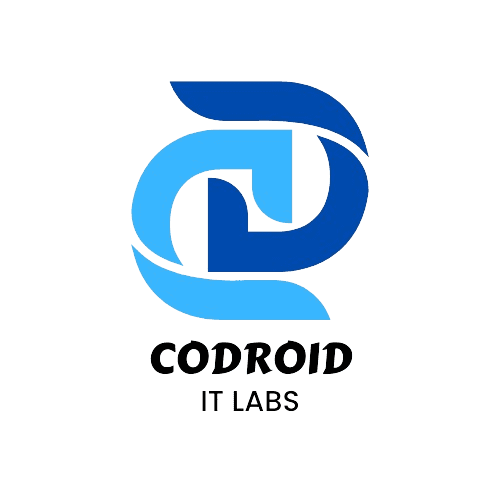
When client attrition moves from a line on a spreadsheet to a direct impact on your bottom line, it’s time for a new approach. This framework provides an actionable, Zoho-centric strategy to Reduce Customer Churn for businesses built on recurring revenue. We offer a clear-eyed perspective on the platform’s capabilities and will be upfront about when do-it-yourself methods or other platforms may be more suitable. We’ll also highlight how our expert implementation can accelerate your success in reducing churn and strengthening long-term customer loyalty.
Essential Churn Metrics to Monitor
To effectively address churn, you must first accurately measure it. Here are the key formulas to track:
- Customer Churn Rate % = (Number of Customers Lost in Period ÷ Total Customers at Start of Period) × 100
- Gross Revenue Churn % = (MRR Lost from Cancellations & Downgrades ÷ Starting MRR) × 100
- Net Revenue Retention (NRR) % = ([Starting MRR − Churn MRR − Downgrade MRR + Expansion MRR] ÷ Starting MRR) × 100
We recommend tracking both customer and revenue churn from the start. Businesses that proactively address revenue churn drivers—such as payment failures, ineffective onboarding, or delayed support—often see a natural decrease in customer churn as a result.
Your 4-Week Blueprint to Lowering Churn with Zoho
Follow these five steps to build a robust churn reduction system within the month.
1) Establish a Unified Data Foundation (Week 1)
Objective: Centralize all customer risk indicators for a single source of truth.
- Integrate Billing Data: Sync Zoho Subscriptions with Zoho CRM. Ensure key details like subscription plan, MRR, next renewal date, and payment status are visible on Account and Contact records.
- Consolidate Support Interactions: Connect Zoho Desk to CRM to log metrics such as the last contact date, the number of open tickets, and recent CSAT scores.
- Incorporate Product Engagement: Funnel user activity events (e.g., logins, key feature usage, last active date) into CRM or Zoho Analytics using tools like Zoho Flow or APIs.
- Enforce ID Consistency: Ensure each billing entity maps to a single Account record, with all related Contacts properly associated in both CRM and Subscriptions.
2) Implement a Predictive Customer Health Score (Weeks 1–2)
Develop a dynamic “Customer Health” score (e.g., on a 0–100 scale) within Zoho CRM, updated automatically via a scheduled function.
Sample Scoring Breakdown:
- Billing Health (35 pts): Flags recent payment failures or upcoming renewals.
- Product Adoption (30 pts): Measures login frequency and use of core features.
- Support Experience (20 pts): Reflects high-priority open tickets or low satisfaction scores.
- Relationship Strength (15 pts): Tracks recent communication and key contact changes.
Categorize accounts into tiers: Healthy (71–100), Under Watch (41–70), and At-Risk (≤40). Use custom views or SalesSignals to instantly flag high-priority accounts, such as those with a low health score and an imminent renewal.
3) Deploy Automated Retention Playbooks (Weeks 2-3)
A. Automate Payment Recovery (in Zoho Subscriptions) Configure dunning management to automatically retry failed payments on a set schedule (e.g., days 1, 3, and 7). Send intelligent reminders encouraging customers to update their billing information via email and SMS.
B. Proactive Engagement for At-Risk Accounts (in Zoho Campaigns) Launch a multi-email journey for users in the “At-Risk” segment. The sequence could include a value reminder, a tutorial on an underused feature, and a retention offer, segmented by customer value. High-value accounts could be routed to a 1-on-1 meeting scheduler.
C. Leverage Your Support Team for Retention (in Zoho Desk) Set up a workflow to automatically generate a proactive outreach ticket when a customer’s health score drops below 40. Equip your team with macros for common retention scenarios like “Re-Onboarding Request” or “Priority Feature Follow-up.”
D. Systematize High-Touch Renewals (in Zoho CRM) Manage upcoming renewals in a dedicated CRM pipeline. Automate task creation and reminders for account managers at key intervals (e.g., 45, 30, and 14 days pre-renewal) to schedule reviews and confirm intent.
4) Analyze and Learn from Your Data (Weeks 3–4, in Zoho Analytics)
- Utilize Cohort Analysis: Create charts to visualize customer retention over 1, 3, 6, and 12-month periods, grouped by their sign-up month.
- Segment Net Revenue Retention (NRR): Analyze NRR by plan type, industry, or customer acquisition source to identify your most (and least) successful segments.
- Perform Driver Analysis: Correlate churn events with behavioral data—like time to first value, support ticket volume, or last login date—to uncover root causes.
- Set Up Automated Alerts: Schedule weekly dashboard reports to be emailed to account owners, highlighting clients who have moved into an “At-Risk” category.
5) Create a Continuous Improvement Cycle (Ongoing)
- Systematically Capture Churn Reasons: Implement a mandatory field on the cancellation form to record why customers leave.
- Conduct Quarterly Reviews: Analyze the top three churn drivers from the previous quarter and design three new experiments to address them.
- Integrate Learnings: Feed insights back into your business to refine customer onboarding processes and inform your product development roadmap.
The Inherent Strengths of the Zoho Ecosystem—and How to Navigate Hurdles
What Zoho Excels At:
- A Single, Unified View of the Customer: Seamless integration across CRM, Subscriptions, Desk, and Campaigns provides unparalleled context.
- Powerful, Cross-Application Automation: Tools like Flow and CommandCenter enable sophisticated, automated playbooks that span the entire customer journey.
- Robust, Integrated Analytics: Zoho Analytics offers the power to build comprehensive dashboards and schedule insightful reports without complex third-party tools.
Navigating Common Implementation Challenges (Where We Can Help):
- Insight-Poor Dashboards: Reports that aren’t read are useless. We construct role-specific dashboards and automated alerts that deliver actionable insights directly to the right stakeholders.
- Data Disorganization: A common hurdle is unifying disparate data. We architect a clean, scalable data model, ensuring ID hygiene and proper mapping between subscriptions and CRM accounts.
- Ambiguous Health Metrics: Devising an effective health score is difficult. We design and implement a custom scoring framework that reflects your unique value drivers.
- Underutilized Automation: Many businesses own the tools but lack the workflows. We deploy and validate proven retention playbooks for payment recovery, renewals, and at-risk engagement.
Work with us (what we actually do)
- Churn-Down Sprint (2–4 weeks): Data model, health score, dunning + renewal playbooks, dashboards, and training.
- Managed Retention: Ongoing experiments, reporting, and quarterly churn reviews.
Ready to Get Started on Zoho?
Let’s build your business the smart way — with Zoho and Codroid Labs by your side.
📅 Book your free consultation now
